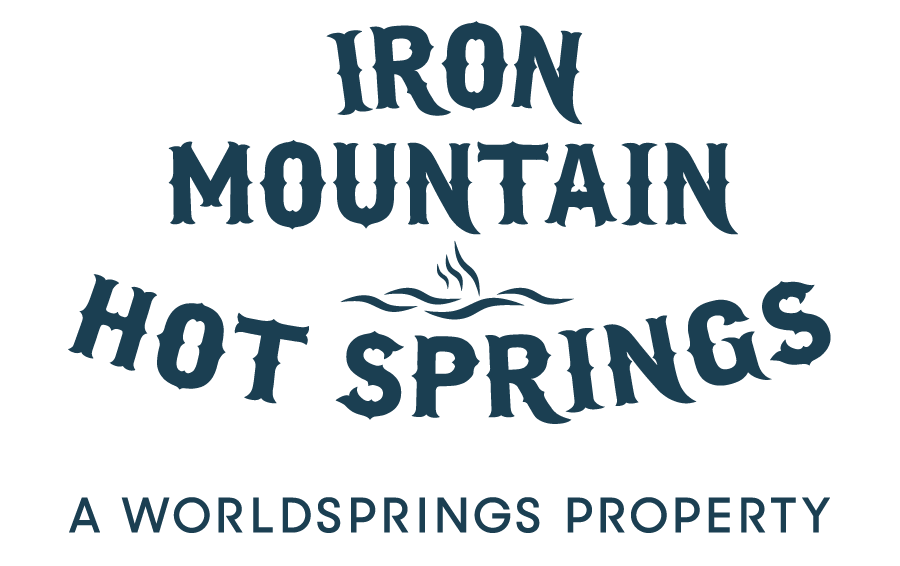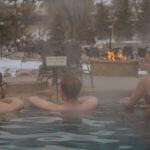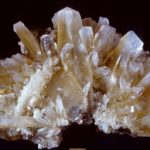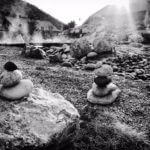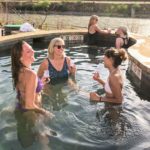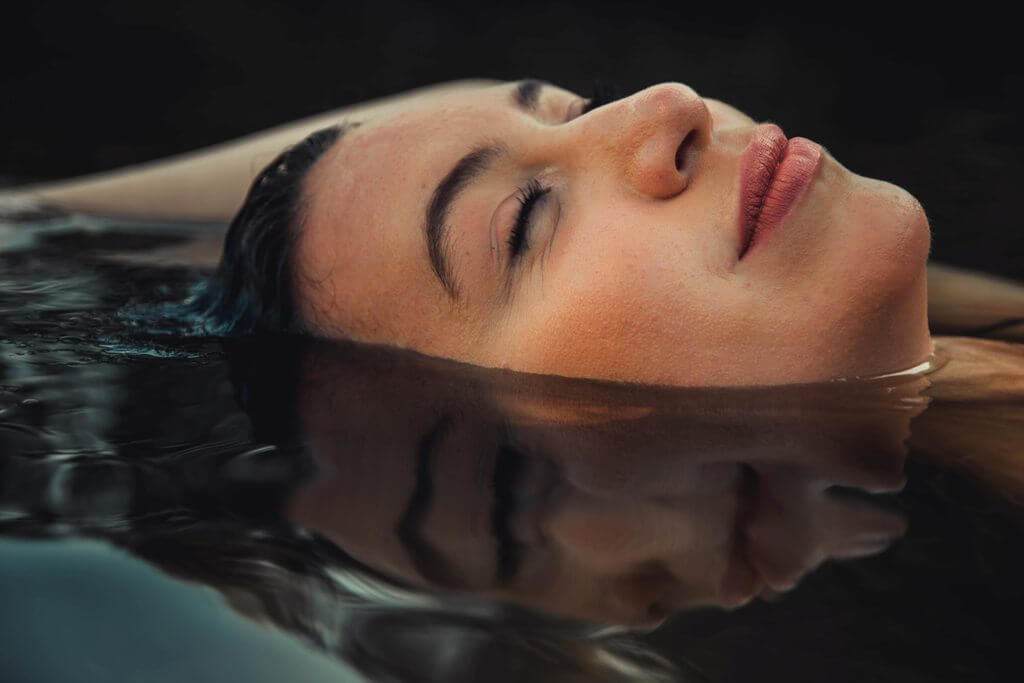
18 Nov Balneology: The Science of Soaking
Balneology is the study of therapeutic bathing in hot springs for healing purposes. Every time you immerse yourself in geothermal waters, like those at Iron Mountain Hot Springs, you are by default practicing a form of balneotherapy.
According to the Balneology Association of North America (BANA), the benefits of soaking in mineral-rich geothermal waters are site-specific. Each hot spring offers bathers a unique experience that is influenced by the springs’ local and regional geography, mineralogy, chemistry, bio-molecular nature, climates and seasons.
Balneology, also called hydrotherapy, has a deep and healing history in cultures throughout the world. Soaking in natural, mineral-dense waters has been an integral part of health and wellness regimens for hundreds of years. In Europe and Japan, it is considered mainstream medicine and physicians routinely prescribe balneotherapy to their patients for a variety of ailments.
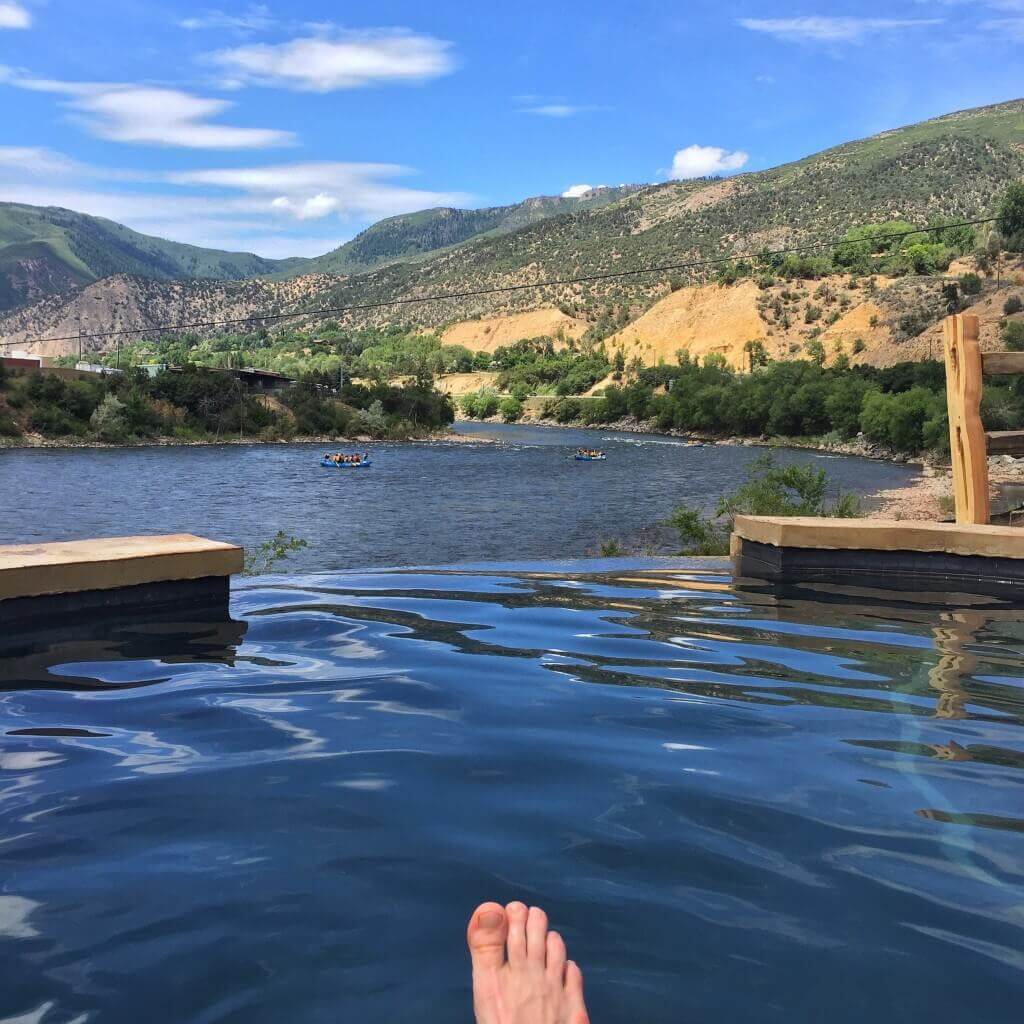 The tradition of soaking for health reasons can be traced to the earliest civilizations. In fact, Hippocrates, the Father of Western Medicine, proposed the hypothesis that all the human diseases started as an imbalance of the bodily fluids. To restore the balance, changes of habits and environment were advised, including bathing, perspiration, walking and massages.
The tradition of soaking for health reasons can be traced to the earliest civilizations. In fact, Hippocrates, the Father of Western Medicine, proposed the hypothesis that all the human diseases started as an imbalance of the bodily fluids. To restore the balance, changes of habits and environment were advised, including bathing, perspiration, walking and massages.
Whether that’s true or not is a matter of debate, but the geothermal waters chock-full of dissolved minerals do seem to have a positive effect on many common and chronic ailments. Hot springs have been known to provide relief for arthritis, a variety skin disorders like psoriasis and eczema, insomnia, fibromyalgia, high blood pressure and stress relief. The superheated water also works wonders on sore muscles and aids in relaxation.
Iron Mountain Hot Springs water contains 14 dissolved minerals—iron, calcium, chloride, sodium, sulfate, boron, magnesium, manganese, lithium, fluoride, phosphate, potassium—with the first five being the most abundant. The water in the 16 soaking pools ranges in temperature from 99° to 109°F, enabling visitors to choose pools that suit their individual tolerance levels.
Because balneotherapy is a year-round pastime in Colorado, many visitors like to plan their vacation based on the proximity to hot springs locations. This is especially true in a state where geothermal springs are prolific and offer visitors a variety of distinctive soaking experiences—from family play pools to clothing-optional settings and everything in between.
The Colorado Historic Hot Springs Loop, which includes Iron Mountain Hot Springs, is a Colorado travel itinerary that helps visitors navigate their way to hot springs destinations on the Western Slope. The 720-mile loop drive includes 19 hot springs and makes stops in Glenwood Springs, Steamboat Springs, Chaffee County, Ouray, Ridgway and Pagosa Springs.
Though an ancient practice, balneology is still an emerging science. Researchers endeavor to continue to learn more about the benefits of soaking and how the minerals and heat contribute to health and wellbeing. What’s not in doubt is that hot springs soaking—balneotherapy—feels fantastic! Join us at Iron Mountain Hot Springs for a therapeutic dip the next time you’re in Glenwood Springs and let us know how soaking makes you feel.
Karin Gamba
Latest posts by Karin Gamba (see all)
- More Serenity On The Horizon At Iron Mountain Hot Springs - October 30, 2024
- Iron Mountain Hot Springs Menus are Warming Things Up for Fall - September 26, 2024
- Experience Adventure and Relaxation with the Double Access Package - August 12, 2024
- Olympic Spirit Soars at WorldSprings - July 18, 2024
